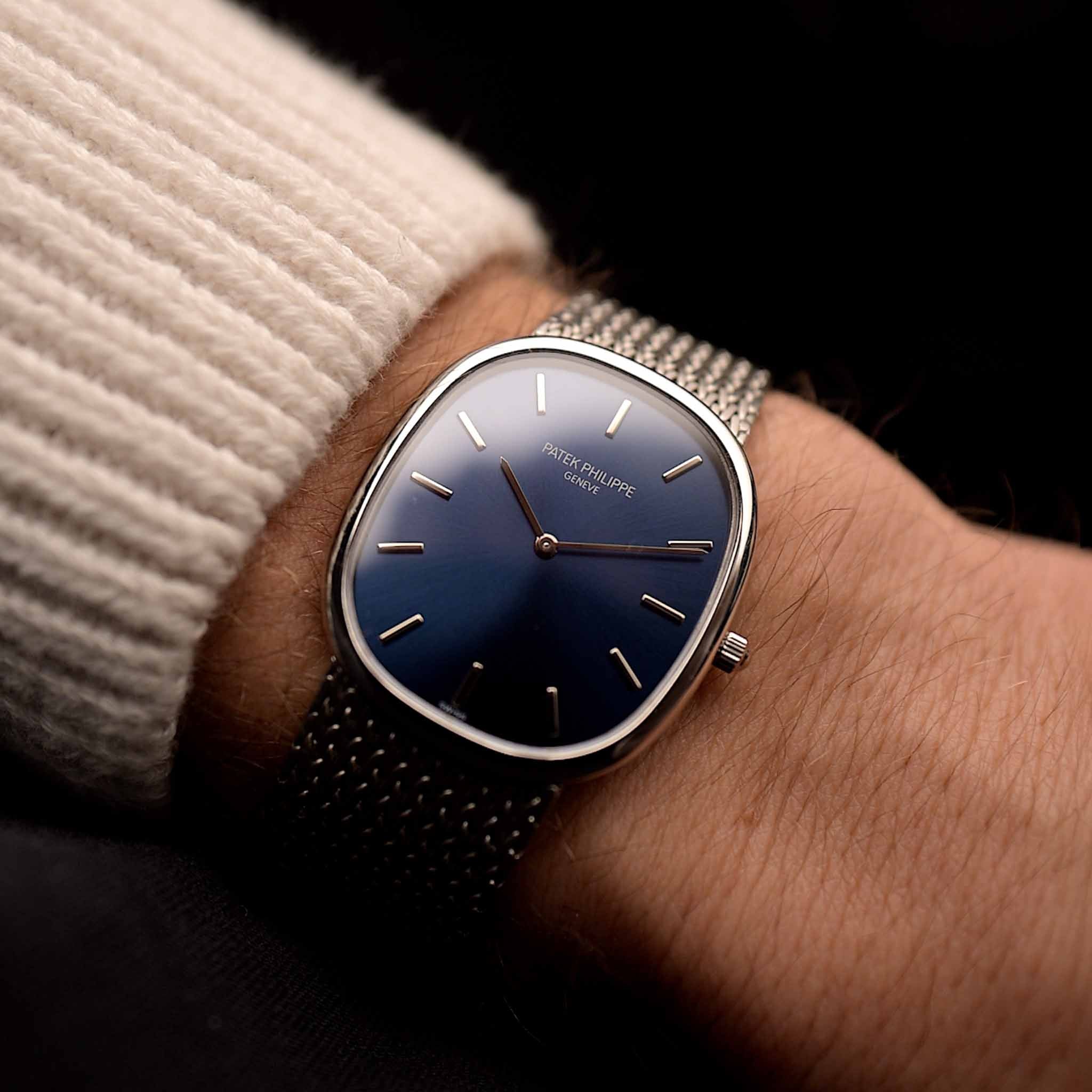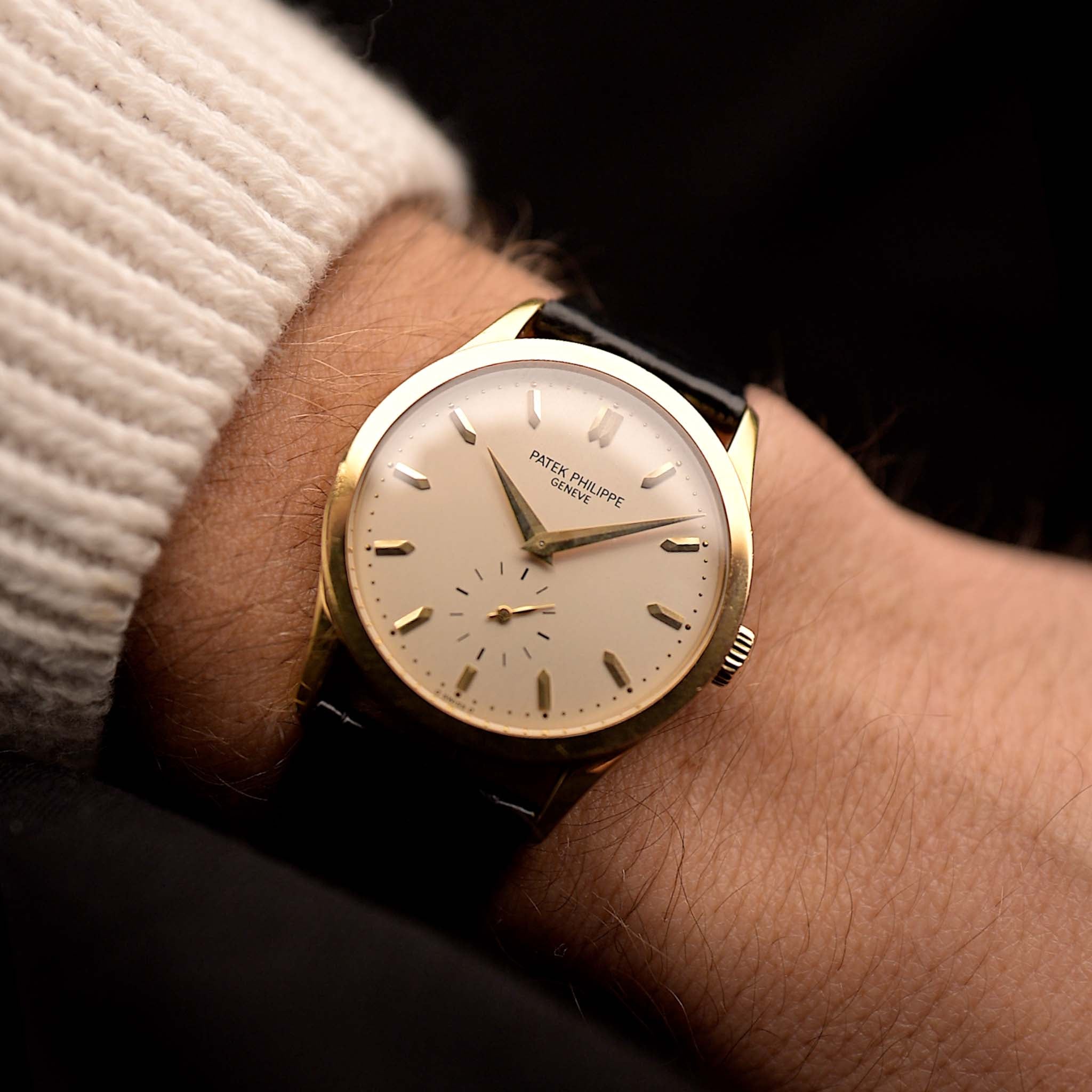How does the average everyday watch look like? What about the dial, the hands, the markers? This is part 2 of our series on the dress casual archetype and how it evolved through its illustrious history. Rolex played a major role in this genre but its design language stayed rather unaltered through the last 60 years. Thus, we'll much rather take a look at all other brands to define the evolution beyond the best-in-class.
November 02, 2022
The Evolution of the "Everyday Watch" - Part II

Marcus Siems @siemswatches
Collector, Author, Data Analyst
The New Normal When you'd have to choose which watch to wear today... what factors play a role in that decision? We'll likely pick it because we like it, think it fits our style or because it reminds us of past experiences and people. Utility is not really a factor anymore - at least for me. So almost every watch can be an "everyday watch" today. But that wasn't always the case. There was a time when a watch had an actual utility and complications were used accordingly. So when did the trend of an all-purpose watch develop? How can we even define such pieces and how did they look like?
The everyday watch - the daily beater or the dress casual alternative - are quite modern phenomena in perception yet the genre itself is quite old. It probably dates back to the first waterproof-cased dress watches of the late 1920s, developed and distributed by non other than the Rolex brand.
What we already saw in our first analyses on the topic was that these elegant yet sturdy timepieces were particularly common in the early 1980s and until today are still mainly produced by Rolex. But when we imagine a world without Rolex we did also see that from the 1970s onward more and more brands started to invest into the idea of an "everyday watch".
 In a world without Rolex ... how would the average everyday watch look like? Photo @goldammer.me
In a world without Rolex ... how would the average everyday watch look like? Photo @goldammer.me
But the open question still remains: How did these pieces look like*? To find evolution we need to define changes through history. The brands have their quite unique own design languages but what about the actual dials? The color, hands, hour markers[1]? All these details can quickly get lost when we only start to look into reference numbers.
1) Dial Color
 Figure 1. Historical Distribution of Dial Color for Dress Casual Watches between 1940 - 2000. Bear in mind this is "no Rolex only" - and I couldn't identify many such pieces from before 1950.
Figure 1. Historical Distribution of Dial Color for Dress Casual Watches between 1940 - 2000. Bear in mind this is "no Rolex only" - and I couldn't identify many such pieces from before 1950.
The most obvious feature of every dial, even from afar, is its color. Looking into the five most common options - white (36%), black (17%), silver (17%), gold (16%) & blue (14%) - we actually observe that there have been "hip" colors for every epoch.
 White is the major color for the dress casual genre but generally the distribution is rather flat. Black dials - like on this beautiful UG Polerouter Automatic - tend to be mainly hip when there's no other strong trend. Photo @goldammer.me
White is the major color for the dress casual genre but generally the distribution is rather flat. Black dials - like on this beautiful UG Polerouter Automatic - tend to be mainly hip when there's no other strong trend. Photo @goldammer.me
You can find white dials most prominently in the classic era of the 1950s. Silver seems to follow suit during the 1960s. Both are also favorites during the Neo-Vintage years of the 1990s and are complemented by gold (early 90s). The 1970s and 80s see an interesting spike in blue dials and black appears to be a classic all the time.
2) Watch Hands
 Figure 2. Historical Distribution of Hand Styles on Everyday Watches from 1940 - 2000. Bear in mind this is "no Rolex only" - and I couldn't identify many such pieces from before 1950.
Figure 2. Historical Distribution of Hand Styles on Everyday Watches from 1940 - 2000. Bear in mind this is "no Rolex only" - and I couldn't identify many such pieces from before 1950.
Opposing to the almost equal distribution of colors we do see that the watch hands have had two or three major favorites throughout the last 80 years: Index (36%), dauphine (21%) and stripe hands (18%).
 The flagship hands of all the dress casual are the index handset. Yet still every era got it's own style. Speaking about flagship style - what about this Longines Flagship Date in 18k yellow gold with brick bracelet? Photo @goldammer.me
The flagship hands of all the dress casual are the index handset. Yet still every era got it's own style. Speaking about flagship style - what about this Longines Flagship Date in 18k yellow gold with brick bracelet? Photo @goldammer.me
The heavy favorite, the index hands, are most common after 1970 and stay above 30% market share with a peak of almost 70% in the 1980s. The dauphine hands are the classic 1950s design (peak of 69%). And the rather broad stripe hands are the style of the space age from the mid 1960s to the late 1970s (peaks 42%).
Honorable mentions go to 1) the slim baton hands which appear to be quite common (peak at 20%) from the 60s up until today. 2) The alpha hands that share the same temporal evolution as the dauphine hand style and peak at about 14% during the 1950s. And 3) the sword hands, a design intertwined with Cartier, gaining traction from the mid 80s on peaking at 22% in the 90s.
3) Hour Markers

Figure 3. Historical Distribution of Hour Markers on Dress Casual Watches between 1940 - 2000. Bear in mind this is "no Rolex only" - and I couldn't identify many such pieces from before 1950.
From the historical hour marker distribution we see about three distinct epochs with their respective marker styles. First, during the 1950s you find the dagger markers with peak popularity of over 70% (14% total share). Second, from the 1960s to the mid 1980s slimmer stick (44% total share) and broad baton markers (23% total share) with peak popularity of over 60% and 40%, respectively. And third, from the 1980s on we observe circular markers (7%) and numerals (10%) dominating with peak popularity of 39% and 29%, respectively.
 The prime hour markers of this genre are the "stick" with 44% of all pieces featuring this style... but still hard to find before the 1960s after 1985. Photo @goldammer.me
The prime hour markers of this genre are the "stick" with 44% of all pieces featuring this style... but still hard to find before the 1960s after 1985. Photo @goldammer.me
4) Conclusion
Looking at the different design aspects I cannot make out clear cut archetypes for respective eras. Well for no era except the 1950s. Here, we see that mainly Omega with classic white dialed examples featuring dauphine handsets and dagger hour markers are by far the most prevalent blueprint for the everyday watch.
However, from the 1960s up until the new Millennium we see evolution of style but the transitions are independent for the analyzed key design elements. For example a peak for a certain hand style does not predict a corresponding hour marker and vice versa.
 So what makes a great "everyday watch"? It's elegant but not too chic, sturdy yet not too clumsy. It's everything we need during our normal lives without being too extreme. It's the watch you can pick up anytime and feel properly dressed. Yet how exactly this might look like is up to you and up to common taste. Photo @goldammer.me
So what makes a great "everyday watch"? It's elegant but not too chic, sturdy yet not too clumsy. It's everything we need during our normal lives without being too extreme. It's the watch you can pick up anytime and feel properly dressed. Yet how exactly this might look like is up to you and up to common taste. Photo @goldammer.me
The evolution of style is further interesting to look a from a brand-centered view. From the mid 70s until the late 80s we see a cornucopia of distinct brands targeting the dress casual market, yet it appears that the key design elements are quite stable during that epoch. Both hand styles and hour marker distributions are relatively stable during that time even though distinct brands are peaking in popularity.
All this together speaks for an overarching concept of the everyday watch common to several brands. And at the same time this concept seems to have been evolving over and over again. So these results hint in the direction that it's not certain models driving the evolution of the everyday watch. More likely it's about (pop-)cultural trends and Zeitgeist.
It's almost impossible to imagine that several brands adapt a rather loosely defined mindset of a watch archetype and implement it with their own heritage and history in mind... Well for the daily beater watch it really does not appear to be about companies but rather the spirit.
Want to read the full story on dress casual watches? Here you can find Part I and Part II.
* Here, again, we focused on all dress casual watches excluding Rolex. As we hav pointed out in our last article, Rolex with its clear design throughout the last Century will very much skew the distribution towards their blueprint models. This effect is particularly strong from the 1970s on - were we find almost every second vintage watch on the market right now to be Rolex - which occludes the developments that have been happening in other parts of the market.
If you want to know more about hand styles, hour markers, dial colors and generally how key design elements are distributed throughout the last Century check out our guide section.
References
[1] ~50,000 Watches from Chrono24, extracted 2020 Nov. 29th and Jan. 6th 2022; Karlsruhe, Germany;
All rights on text and graphics reserved to the Author.




























Leave a comment